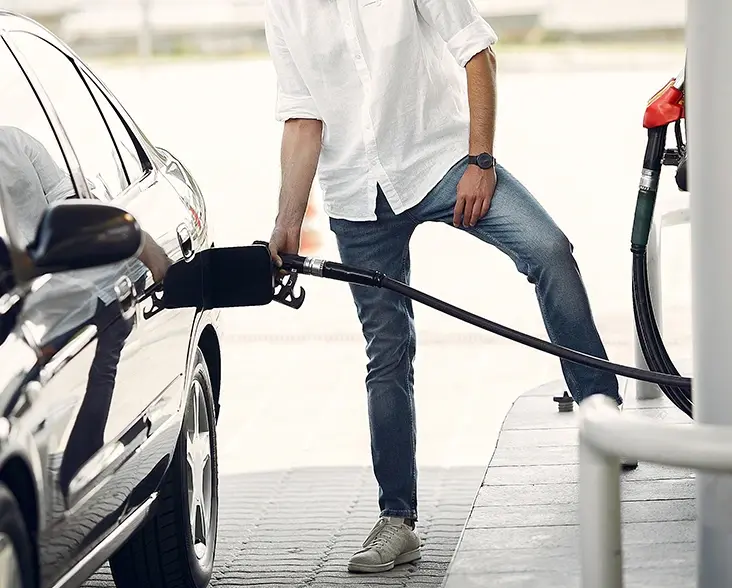What is Misfueling? Effects and Prevention Tips
Filling your vehicle with the wrong fuel might sound like a rare mistake, but it’s surprisingly common. Thousands of drivers face it every year. Misfueling happens when a driver accidentally fills a petrol engine with diesel or vice versa. This simple slip-up can cause severe mechanical damage, affect your vehicle’s performance, and lead to expensive repairs.
In many cases, people only realise the mistake after starting the engine, and that’s when the real trouble begins. Putting the wrong fuel in a car not only disrupts the fuel system but can also damage injectors, filters, and pumps if not addressed immediately. The key lies in staying calm, recognising the signs early, and knowing the right steps to take.
What Happens When Diesel Enters a Petrol Car?
It may seem like a small mistake to put wrong fuel in a car, but the results can be costly if not handled properly. When a driver accidentally puts petrol in a diesel car, panic is a common first reaction, but it’s best to stop and assess the situation calmly.
If diesel is mistakenly filled into a petrol engine, the effects are slightly different. Diesel fuel is thicker and oilier, designed to lubricate diesel engine components, while petrol engines rely on a spark for combustion.
When diesel enters a petrol tank, it doesn’t burn efficiently. This leads to rough idling, misfires, and sometimes complete stalling. The heavier fuel can coat spark plugs and fuel injectors, clogging them and preventing proper ignition. The good news is that because diesel nozzles are typically larger than petrol inlets, this mistake is relatively rare. However, if it does occur, do not start the vehicle. Even turning the ignition can allow the contaminated fuel to circulate, worsening the damage.
What Happens When Petrol Enters a Diesel Car?
The reverse scenario, putting diesel in a petrol car, is rare, but wrong petrol in diesel car cases are far more common and potentially more harmful. Petrol acts as a solvent, not a lubricant. Diesel engines, on the other hand, depend on the lubricating properties of diesel to protect internal parts such as fuel pumps and injectors.
When petrol mixes with diesel, it strips away lubrication, causing friction between metal components. As a result, small metal particles can break off and circulate through the system, potentially reaching and damaging the engine. This contamination also leads to low fuel pressure, engine knocking, excessive smoke, or stalling mid-drive.
Even a small amount of petrol in a diesel tank can cause long-term harm, which is why experts advise against starting the vehicle after a misfueling incident. The tank should be drained and cleaned immediately by professionals before adding fresh fuel.
Immediate Steps to Take After Misfueling
Realising that you have misfueling your vehicle can be stressful, but acting fast and smart makes all the difference. If you have filled the wrong fuel in your car, the golden rule is don’t start the engine. Starting the car allows the contaminated fuel to circulate through the system, causing further damage.
If you’re still at the fuel station, inform the attendant immediately. Most stations have trained personnel who can help move your vehicle safely to the side. Once parked, contact your roadside assistance or insurance provider. They can arrange for your vehicle to be drained and flushed by certified mechanics.
If you realise the mistake after starting the vehicle, switch off the engine immediately and pull over safely. Continuing to drive can cause internal wear and clog the filters. Never attempt to fix the problem yourself. Fuel systems are sensitive, and handling fuel can be dangerous. Always rely on professional help for draining and cleaning.
Top Tips for Preventing Misfueling
While it’s easy to put wrong fuel in a car, the best way to handle misfueling is to prevent it altogether. Most such incidents happen because we refuel on autopilot, distracted, tired, or simply in a hurry. To avoid accidentally putting petrol in a diesel car, slow down for a moment at the pump and double-check.
Look for the label inside your fuel flap. Petrol cars usually display an “E10” or “E5” marking, while diesel ones have “B7.” Confirm this label with the dispenser nozzle before refueling. Green handles typically indicate petrol and black ones denote diesel, though colour codes can vary by station, so it’s safer to rely on the written label.
If you drive a diesel vehicle, consider installing a misfuel-prevention device. These devices detect the nozzle size and prevent a petrol nozzle from entering a diesel tank. They’re inexpensive and easy to install, saving you from major repair bills later.
Also, if you’re driving a rental or unfamiliar vehicle, double-check the fuel type before you start your journey. A few seconds of caution can save you thousands in repairs.
Conclusion
Even the most careful driver can make a mistake, but knowing how to respond to misfueling can prevent lasting damage. If you put wrong fuel in your car, acting quickly and responsibly is vital. Never start the engine, seek professional assistance, and ensure the contaminated fuel is drained completely before driving again.
At Nayara Energy, every step of the fueling experience is designed to make your journey worry-free. With advanced quality checks, clear dispenser labelling, and nationwide availability of both petrol and diesel, Nayara Energy ensures your vehicle always gets the right fuel it deserves. Because every journey, big or small, deserves to be powered by trust and nothing less.
FAQs
1. What happens if you mix petrol and diesel in a car?
Mixing petrol and diesel disrupts the engine’s combustion process. Petrol reduces the lubrication that diesel parts rely on, while diesel clogs the finer components of petrol engines. This combination can cause the engine to stall, emit smoke, or refuse to start. Immediate draining and cleaning of the tank are necessary to prevent serious damage.
2. What are the signs of wrong fuel in a car?
Common symptoms include difficulty starting, unusual engine sounds, jerky acceleration, reduced power, and smoke from the exhaust. The car might also misfire or stop abruptly. If you notice these symptoms soon after refueling, turn off the engine and seek professional help immediately.
3. How long does it take to fix wrong fuel in a car?
If detected early, a professional drain-and-flush procedure usually takes between 30 minutes and two hours. However, if the wrong fuel has circulated through the system, repairs may take longer, especially if injectors or filters are damaged.
4. Can misfueling cause long-term car problems?
Yes. If not addressed promptly, misfueling can lead to permanent engine wear, corrosion, and reduced compression. Repeated misfueling incidents or delayed repairs can also shorten your vehicle’s lifespan. Proper maintenance, trusted fuel sources, and careful refueling habits are key to avoiding long-term damage.




